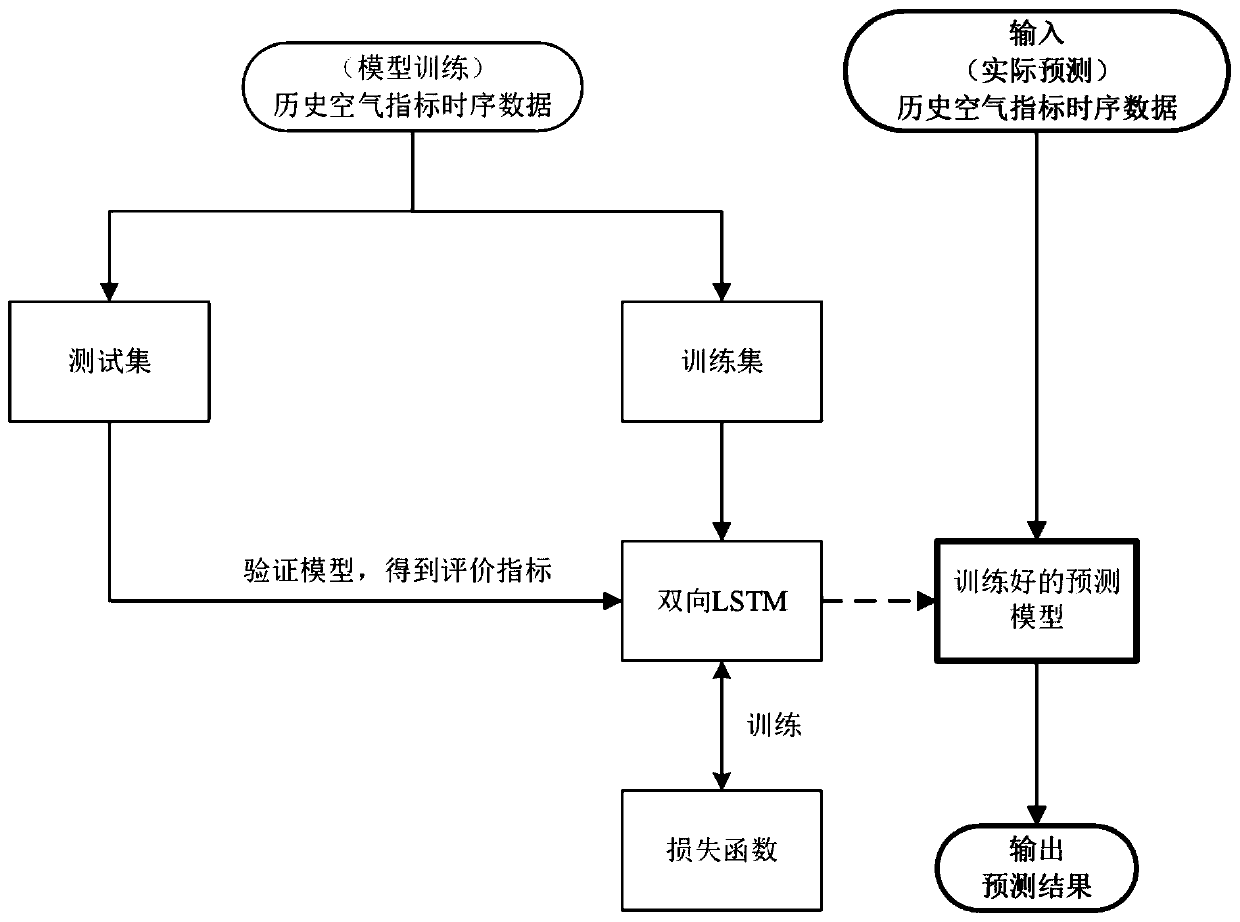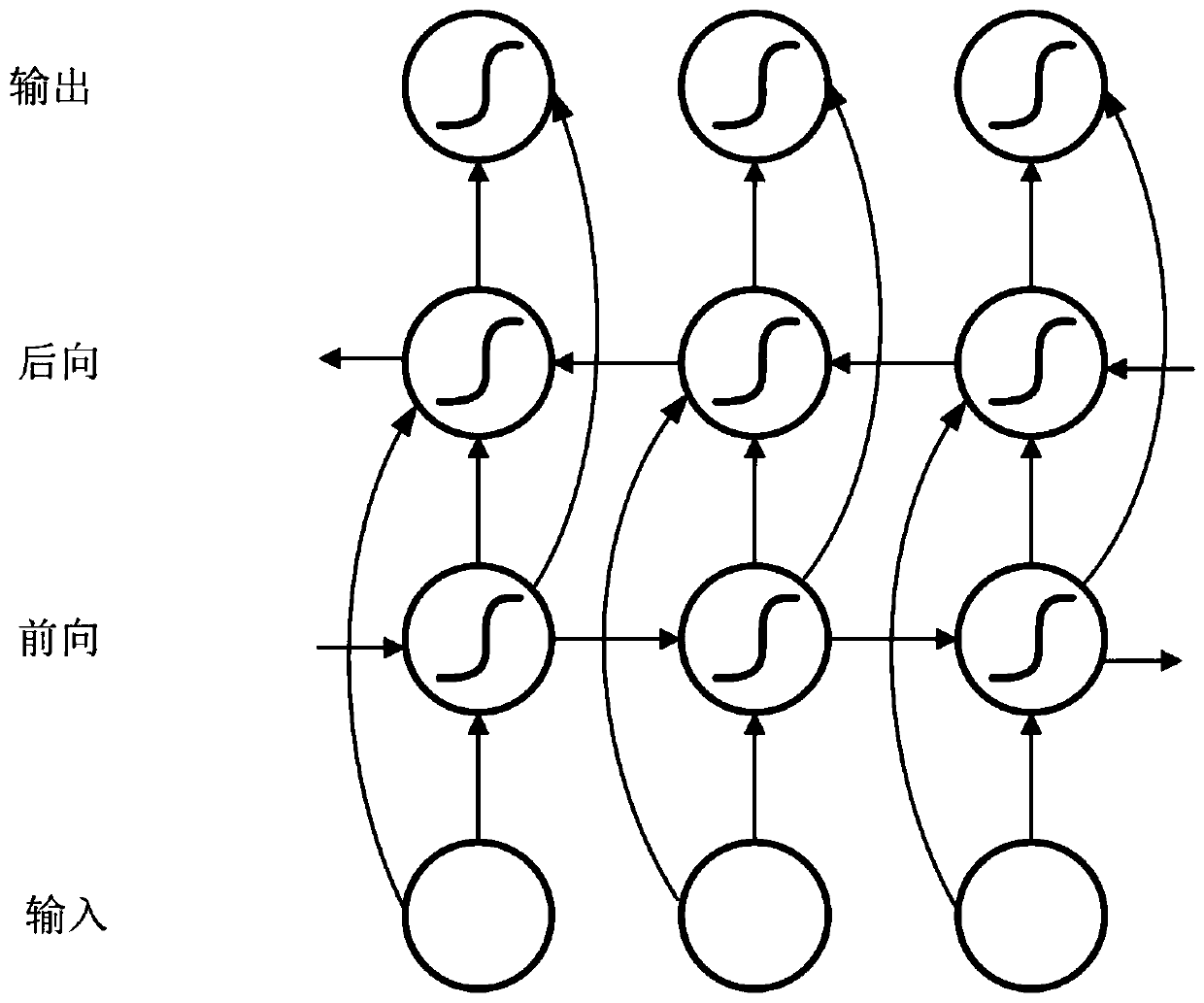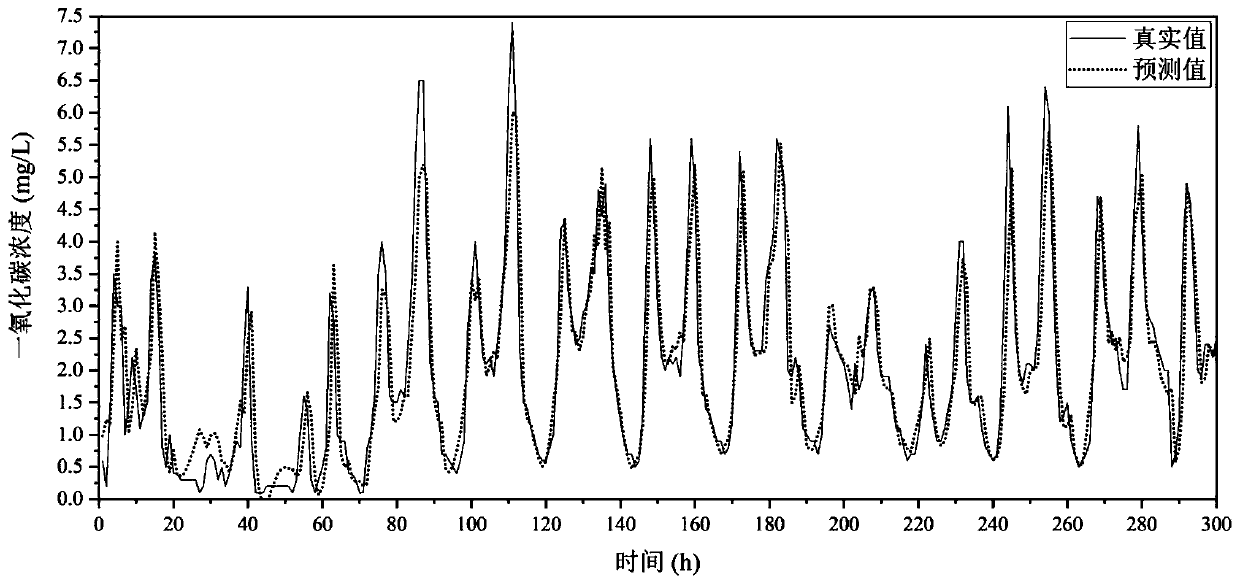Air quality prediction method based on deep bidirectional long-short-term memory network
A long-term and short-term memory, air quality technology, applied in prediction, neural learning method, biological neural network model, etc., can solve real-time change interference, increase air pollutant prediction, difficulty and other problems
- Summary
- Abstract
- Description
- Claims
- Application Information
AI Technical Summary
Problems solved by technology
Method used
Image
Examples
Embodiment Construction
[0026] Such as figure 1 The flow chart of the algorithm is shown, and the structure of the two-way long-short-term memory network is as follows: figure 2 shown. The specific steps of this algorithm are as follows:
[0027] Step 1: Perform preprocessing after data collection to obtain time series data of pollutants, and divide the data set into training set, verification set and test set;
[0028] Step 2: Input the data of the training set into the deep two-way long short-term memory network for training until the network converges;
[0029] Step 3: Input the data of the verification set into the network for verification, and adjust the parameters of the network to finally obtain the optimal parameters;
[0030] Step 4: Save the final model, input the test set to test the recognition effect, and the final model can be used in the actual air quality prediction link.
[0031] Described step 1 comprises the following steps:
[0032] Step 1.1: Data collection: The data collec...
PUM
 Login to View More
Login to View More Abstract
Description
Claims
Application Information
 Login to View More
Login to View More - R&D
- Intellectual Property
- Life Sciences
- Materials
- Tech Scout
- Unparalleled Data Quality
- Higher Quality Content
- 60% Fewer Hallucinations
Browse by: Latest US Patents, China's latest patents, Technical Efficacy Thesaurus, Application Domain, Technology Topic, Popular Technical Reports.
© 2025 PatSnap. All rights reserved.Legal|Privacy policy|Modern Slavery Act Transparency Statement|Sitemap|About US| Contact US: help@patsnap.com



